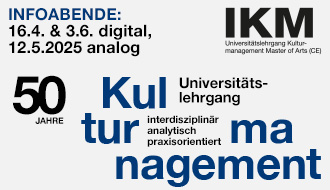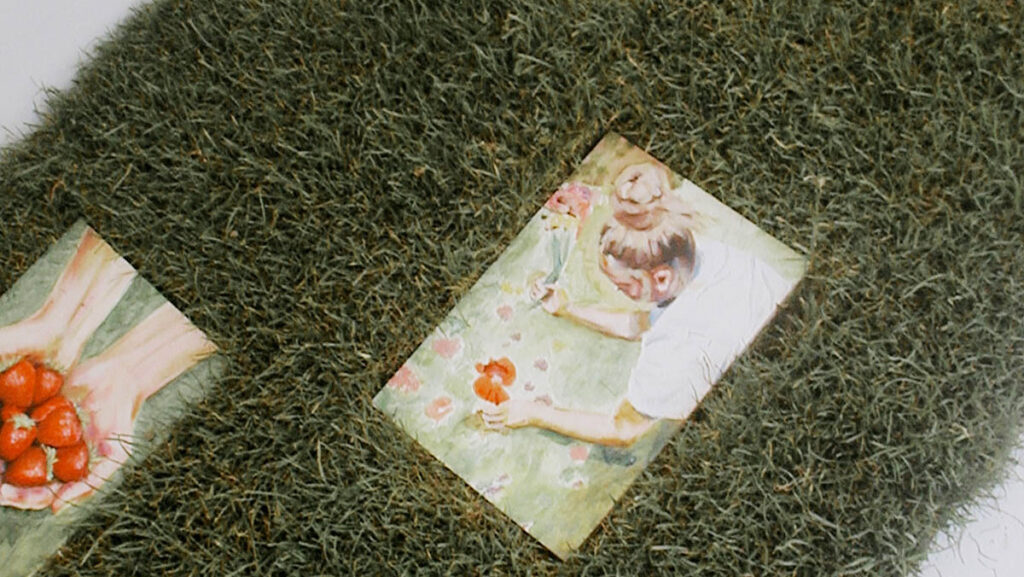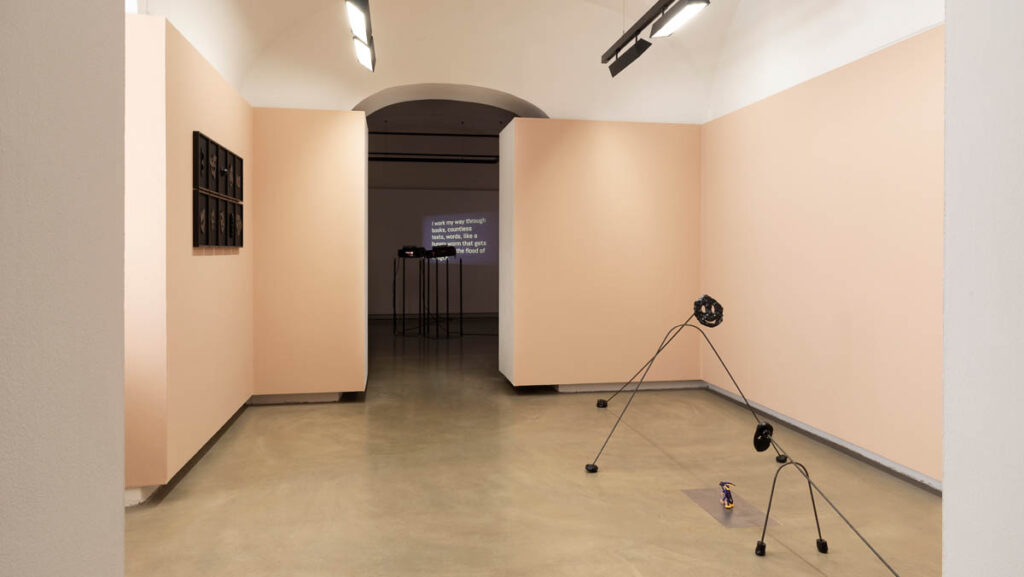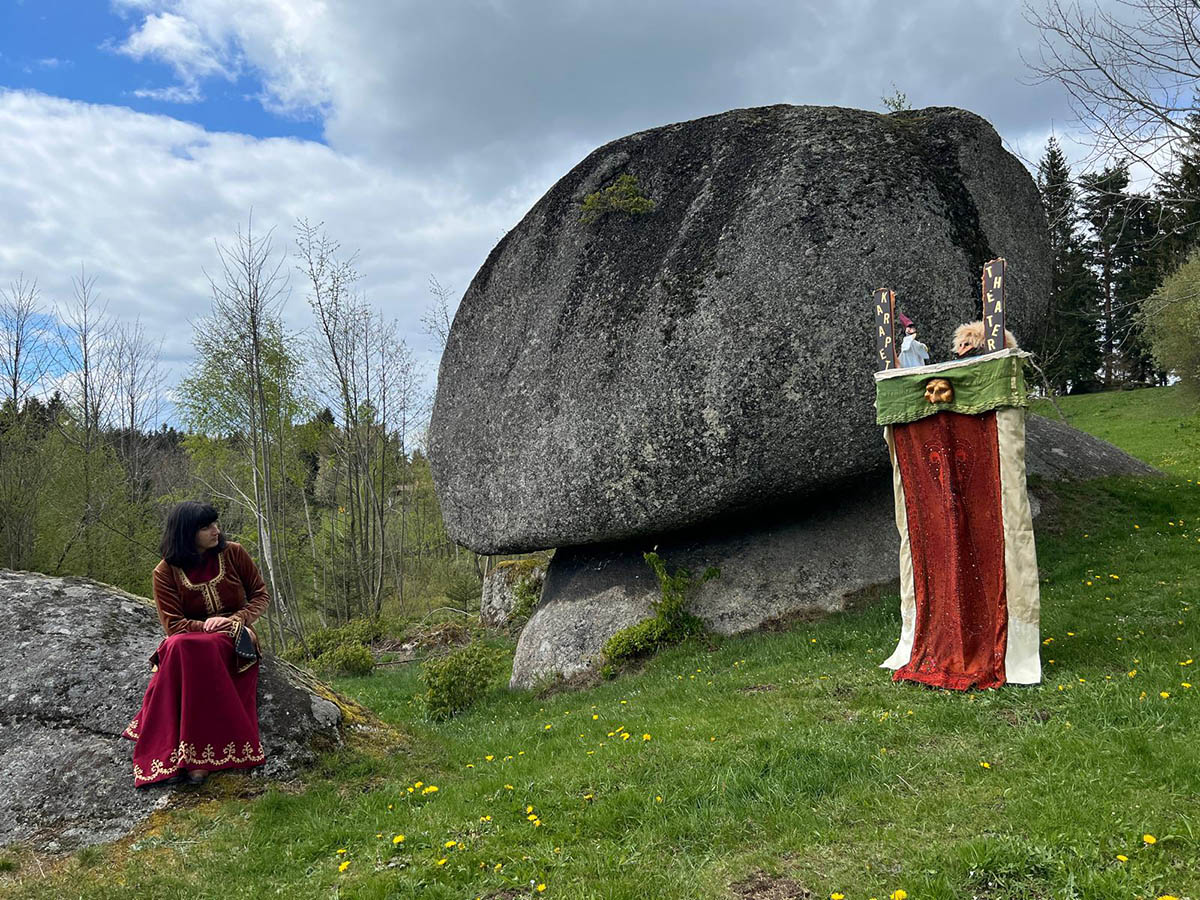
The year-long preparation process for the exhibitionTraumspeisekammerwas a very intense collaboration that brought your different practices and ideas together. How was the experience of working together? Could you describe the genesis of the project? And how did each of your practices find a space in the exhibition?
Anne: Gagik and I met for the first time at the end of 2022 at the WEST – Studio space in Vienna. I invited Gagik for the collaboration in philomena+. It was an intense, working process of creating the exhibition that started one year ago. We come from different disciplines, me from the visual arts and Gagik from the theater world and movie production – but that is also what I love to bring different experiences and elements together and then you can create something bigger.
We started talking about our childhood memories and through Gagik’s stories, I got more in contact with my Armenian roots. I grew up in the Waldviertel, Gagik in Armenia.
We really focused on collaboration and brought all our artistic elements in—for example, my sleep performance and site-specific installations and Gagik’s puppet theater.
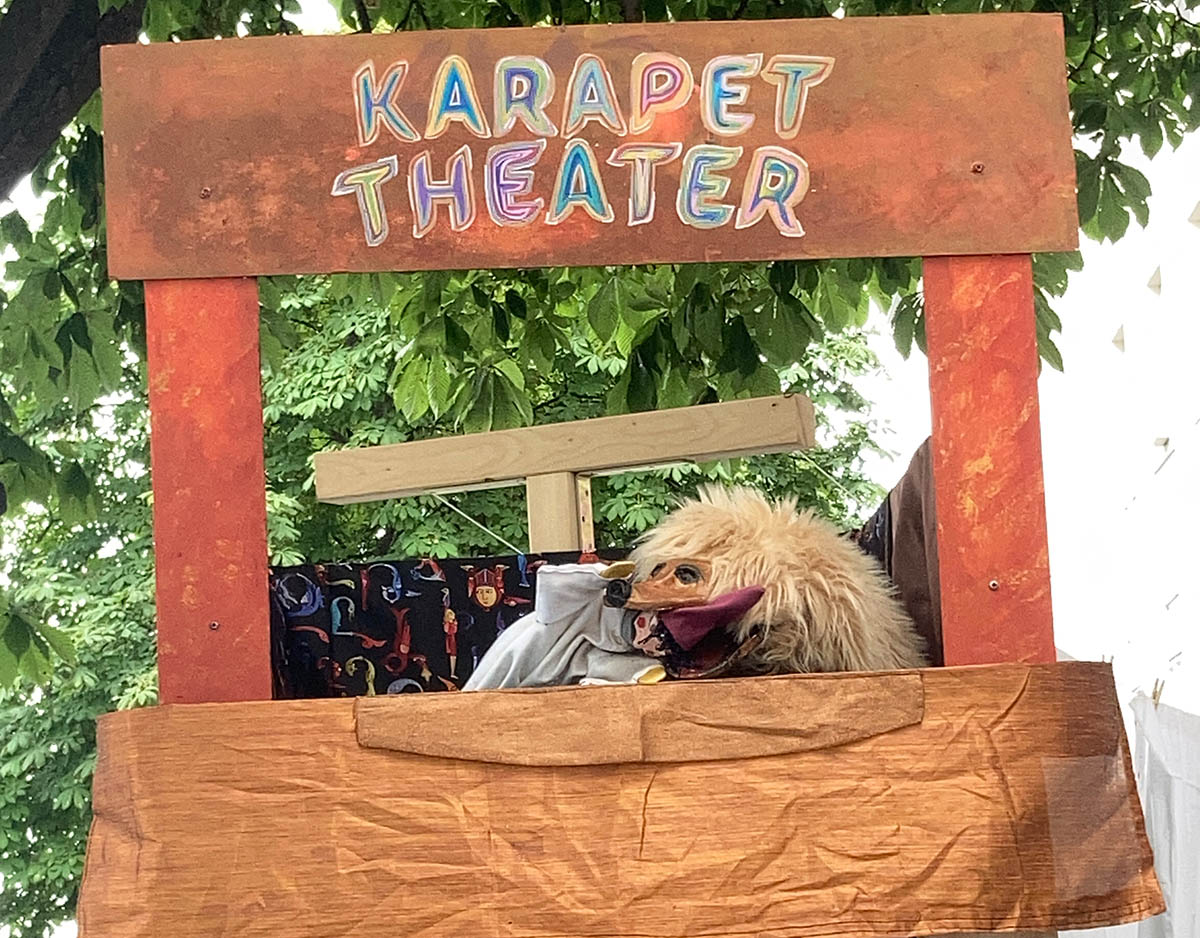
Gagik: I remember the first time I met Anne, it was at her book presentation. I believe she also had a performance. As she mentioned, this happened in the building where we have our studios. I had just finished rehearsals and thought it would be a nice way to recollect my energies. When I realized she was a sleep performer and as I knew a bit about the history of sleep performance in the 60s and 70s I thought it was a very poignant theme to return to during these times of high-speed mass information.
For me, the genesis of this project was the sentence she casually uttered after we introduced ourselves to each other. “I was 35 years old, when I woke up“ referring to her newly discovered Armenian roots. I was taken aback by the vulnerability of this statement, especially since it was our first time talking to each other.
Once we committed to the philomena+ project, I thought exactly that sentence would be the foundation of our collaboration.
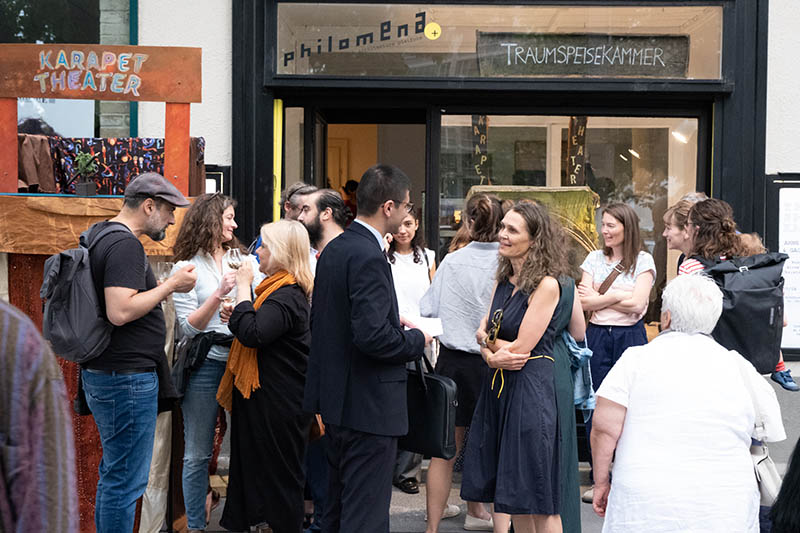
In my interpretation of Anne’s work, her medium is attention. Making a sleep performance, witnessing a sleep performance brings out the plasticity of attention. I love that medium, as much as people might find our disciplines far away from each other, in reality, both disciplines are fueled by that very plasticity. Of course they ultimately manifest within different dimensions. The Traumspeisekammer is kind of that bridge between those two dimensions. Anne’s personal story, her struggles, identity discoveries, her joys, the emotions, all those topics are there. My new interpretation of traditional puppet theater, The Karapet Theater Tradition, comes in and its main hero, Karapet, plays the role of a guide and interacts with „the dreamer“ and brings to light those elements and themes of the Traumspeisekammer.
As Anne continues her journey into her Armenian roots, so will the Karapet Tradition be there to guide and serve as a tradition, in the pure sense of the word, rather than a dogmatic, nationalistic, and prejudiced element that one may encounter as they discover new ethnic roots within themselves.
That’s something that is so culturally unique to our project. As we continue to unravel the diasporic elements of Anne’s identity, together with Karapet, and the connection between Waldviertel and Armenia, the Traumspeisekammer blooms forth as a cultural scope that respects the history of objects and images in a larger continuum where processes of innovation, replication, and mutation are in continuous conversation through time. The exhibition that’s on view now is a cut section of a specific time and place. An artistic expression or work, piece of tree or any natural element and a functional object used for baking bread are treated the same because they all serve the same medium. The medium of attention…
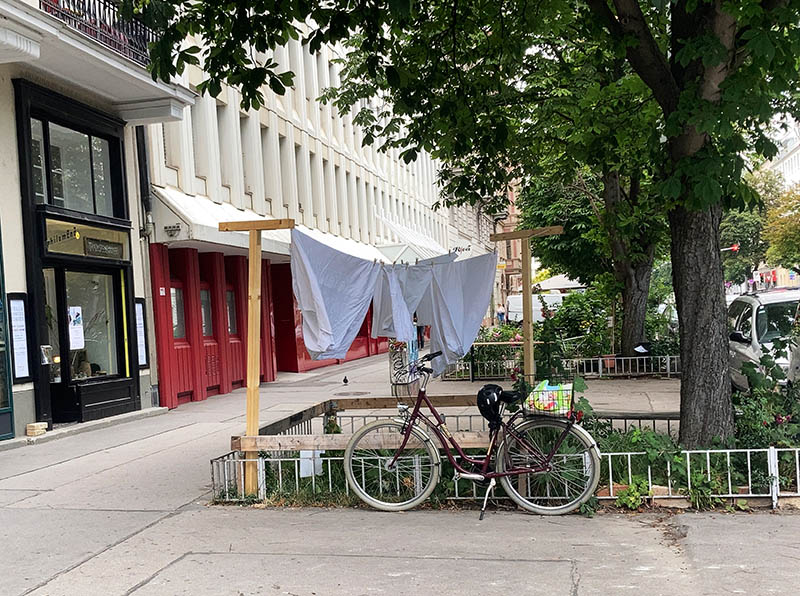
How did you come up with the idea to transform the philomena+ project space into Traumspeisekammer? What does this room represent for you?
Anne: We often talked about the smells and tastes of our childhood.From the apricots in Waldviertel, the delicious dishes of our grandmothers, the sweets,…
…and the smell of the Speisekammer. I still remember it very well. Then there was the playing around with the wording of „Speisekammer“ and we transformed it into the Traumspeisekammer.
We often had talks during dinner…and shared food together. Gagik is a fantastic cook by the way. We watched Parajanov movies together and got lots of inspiration for the Traumspeisekammer. We wanted to create the atmosphere that visitors are transformed back into their childhood as soon as they enter the space…I think it works.
Gagik: I like to keep my personal story of how we finally discovered this new term Traumspeisekammer and what it represents to me, a secret, of course, everything Anne said is true but there is so much more to it. My memories, especially those during my childhood are so sacred to me, also a bit tragic… Anne has started to see for herself, that there is a lot of tragedy in the Armenian identity. My lamentation is for a place and a time that can no longer exist. There was a lot of poverty and a lot of pain and yet a lot of love, grace, and care… Nowadays, in Armenia, poverty is being rooted out with extreme prejudice and with it all the love and care and grace…
Anne grew up so far away from the Armenia countryside, the Waldviertel and yet it is so similar in its genetic makeup to the Armenian countryside, our summers revolve around apricots, our inhaling and exhaling done on top of oxygen-rich hills, our evening walks scented by cow dung. I remember how we both talked about our fear of chickens as children, especially that damn rooster!
Of course, these are not exclusive to Armenia and Waldviertel but Anne and I found a way to connect by just reminiscing of our childhoods.
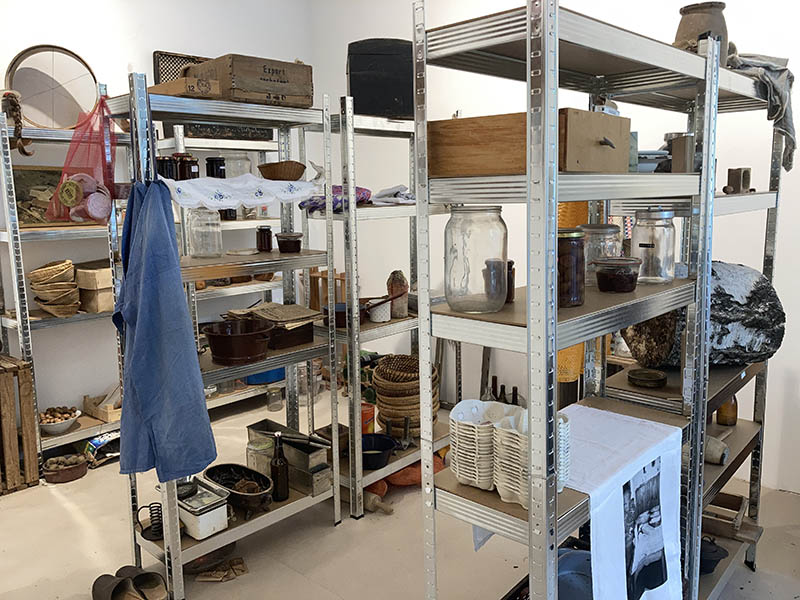
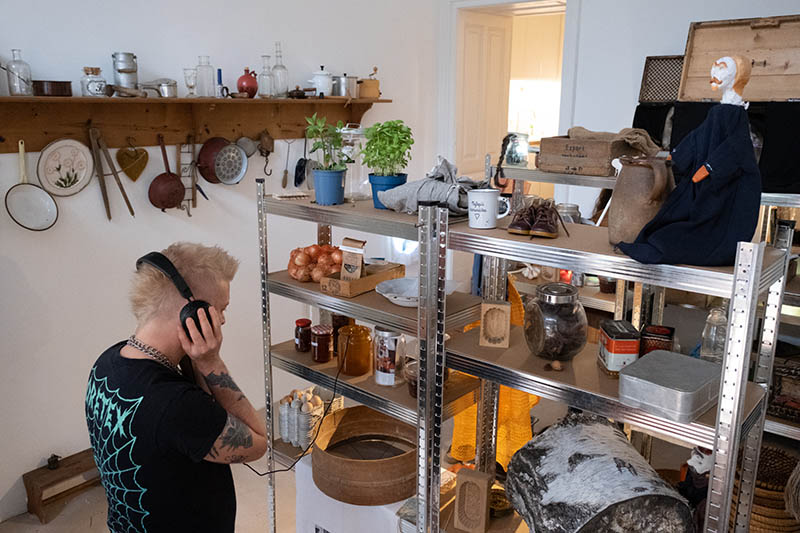
Within the exhibition Traumspeisekammer at philomena+ the visitors can explore preserved foods alongside your own childhood memories and discover references to Waldviertel as well as to Armenia. What are the references that were important for you to include?
Gagik: Actually, what’s interesting is that there is one installation where a jar of marmalade plays a full interview that Anne and I had with her grandparents. Their story of a post World War II generation and my story of a post Soviet Armenia are quite similar in their pathos. This installation could bring a visitor a lot of insight into what we are really trying to express, however, at the same time, everything is ambiguous enough for each person to come with their own dreams and their own memories and allow the space to hold them and for them to travel within those elements.
Of course, there are other installations and other references within the entire project that could help bring more insight. At the same time, as this is a collaboration between a performance artist and a theater artist, I do think that our live performances and the residency are probably the most accessible elements of the entire exhibition and I encourage anyone in Vienna to come to those: The Karapet theater tradition will have one final show on July 4 in the Venediger Au, close to philomena+ and Anne will have her dream residency between July 22 and 26. Perhaps we might have some other pop-up performances as well, and those would be good opportunities to come and interact with the Traumspeisekammer.
Anne: What is important to include? It’s about the smell of the Speisekammer, the coldness of the space. We wanted to bring in all the senses in our project. People can touch old towels, fabrics. Then our experiences with sound – with music. I played violin and piano and I still love to sing.
We recorded a lot of sounds in Waldviertel, for example my mum singing or our peacock making weird sounds. In the exhibition you find drawers – the visitor can open it and there sings my mum in the flour or the cat is licking milk in a dose on the floor. In-between you find old home-videos our parents did in the 90s. There are a lot of parallel worlds going on between Armenia’s and Austria’s countryside.
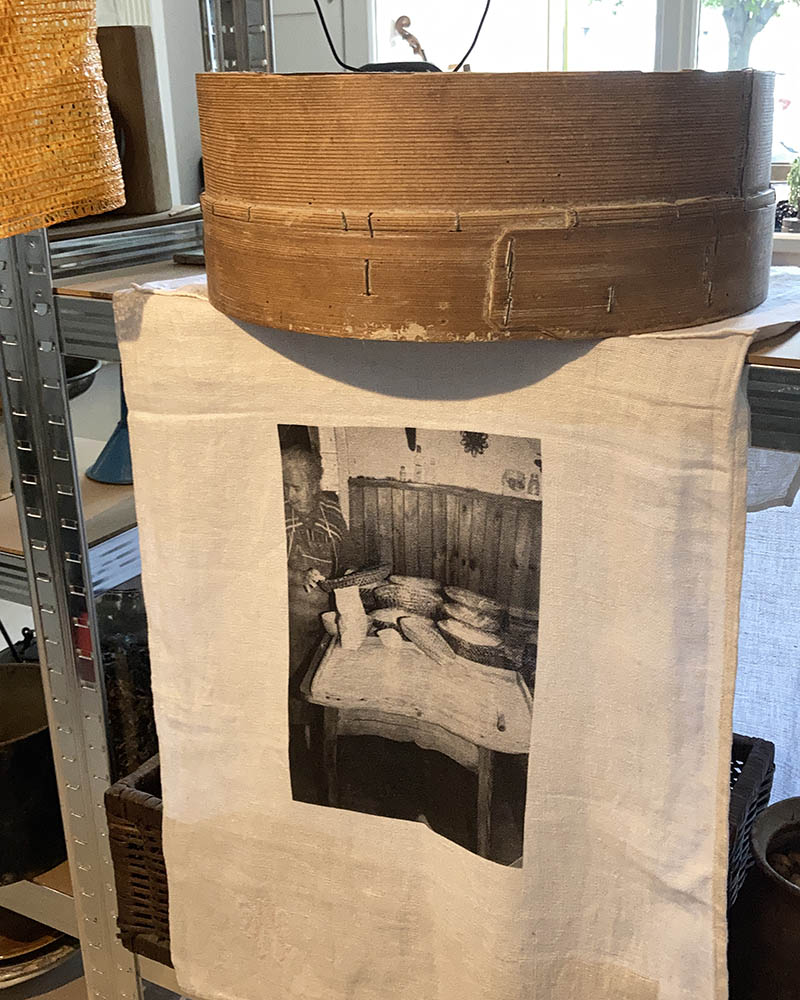
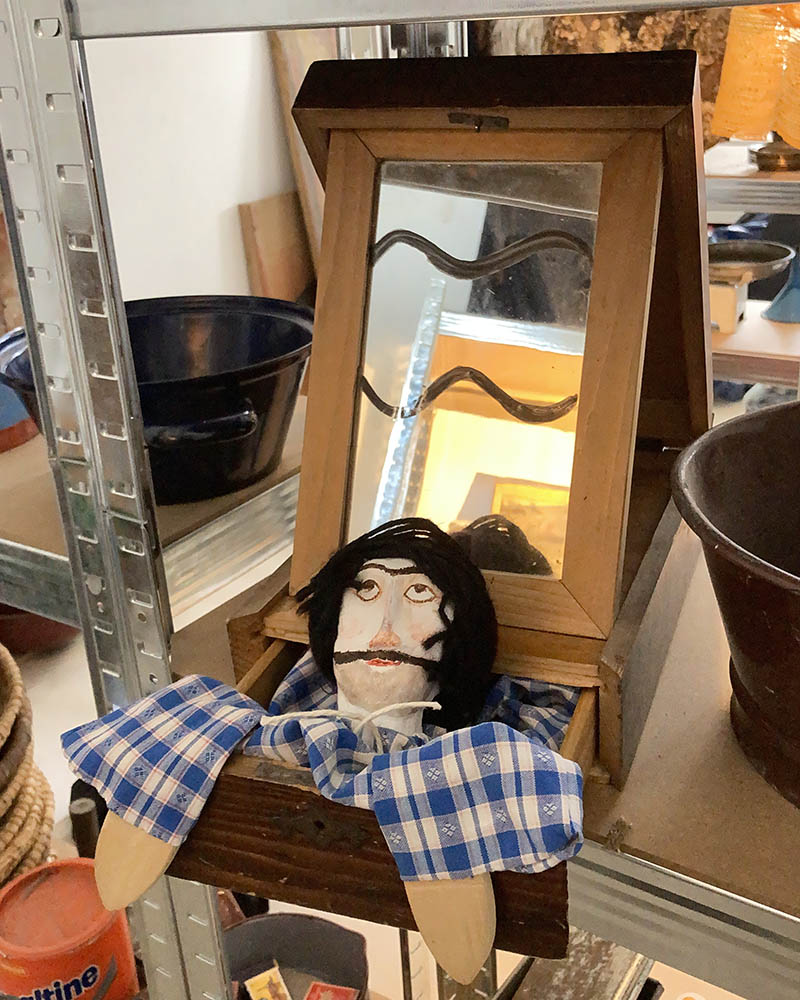
Which role do dreams and the act of sleeping play in your artistic practices? How do you work with it in this exhibition?
Anne: I have been writing down my dreams since my childhood and did my first sleep performance in 2013. During the exhibition I will have a dream residency at the end of July where I will collect my dreams in philomena+. People can join for a visit and we talk about dreams. In recent years dreaming has become more and more a topic for me. Also during Covid, I had the craziest dreams and took a lot of inspiration from the stories for my artistic works. Sometimes I draw my dreams.
Gagik: Yes, there are a few moments where our absurdism even shocked me… When Anne took out her 12 year old hair, Anne kept asking me, “Is it too much?”. I still haven’t answered that question… I don’t know but I do know that it shows that same vulnerability that I encountered when she told me of her waking up at 35 years old. What is more vulnerable than the sleep-state? The triggers for dreams and sleep are everywhere in this exhibition and I think for each person it will be different. For me, it’s holistic, we are trying to make space for such a state to be triggered and to be explored.

A major part of the project was also the opening performance which merged your performative practices – Anne’s sleep performances and Gagik’s Karapet puppet theater. Could you elaborate the role of the opening performance for the exhibition project?
Anne: The opening performance was a new experience for me, as we had a story in the performance. Normally my performance is reduced to a minimum, sleeping. Now, I’m the dreamer, starting watching the Austrian Kasperl on TV. Karapet appears and guides me into the dream world. We also had dancers from the Armenian School during the opening. There was an energy, it was crowded and unplanned things happened. In the end it was a good experience.
Gagik: The opening performance was an in person invitation and demonstration of the history and major themes of Traumspeisekammer. First and foremost, passerbyers encounter the first installation of the exhibition outside of philomena+ space named “Rememberings”. A washing line with fresh washed white linen and a woman’s voice that yells in Armenian “zhaveli spirit”. This is directly from my childhood, every day at a certain time a woman would be selling washing powder called “zhavel”.
Anne with bare feet falls asleep, slowly enters the dream world, Karapet appears and has his own dream and finds the Duduk, his old wind instrument from the Armenian highlands, and by playing it he meets Anne. He then shares a pair of hand knitted socks with Armenian motifs to warm Anne’s feet and help her step inside through the theater. Anne then invited the crowd to do the same and they all stepped into the exhibition space through the Karapet Theater…
Exhibition: Traumspeisekammer
Artists: Anne Glassner & Gagik Arshák
Curators: Aline Lenzhofer & Christine Bruckbauer
Exhibition duration: 07.06. – 27.07.2024
Puppet theater by Gagik Arshàk: Thursday, 04/07/2024, 4 pm at Venediger Au (in the park next to the playground and kindergarten)
Dream-Residency by Anne Glassner: 22/07 – 26/07/202
Address and contact:
philomena+
Heinestraße 40, 1020 Vienna
www.philomena.plus



